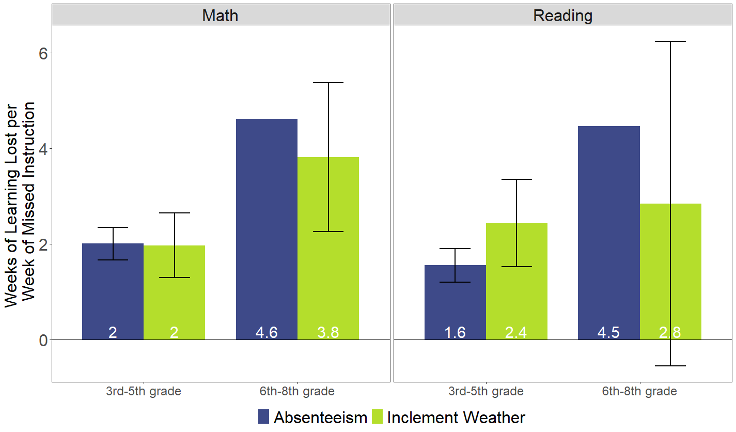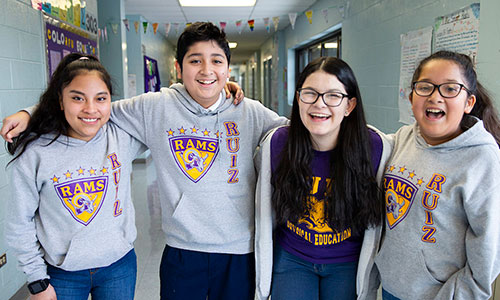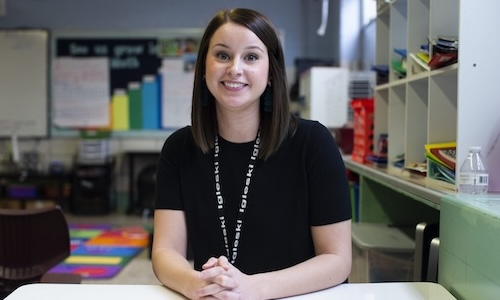
Between powerful hurricanes in the Southeast, wildfires in the West, and heat waves all over the country, inclement weather–related school closures are becoming increasingly common in the United States. In 2024 alone, two major hurricanes closed schools in North Carolina and Florida for weeks and caused untold suffering and damages to local communities. These events not only interrupt children’s academic lives but also often impact their physical well-being, home and neighborhood environment, and sense of security. Some families lose homes and livelihoods and are displaced for months or even years.
In the face of such profound disruptions, the reopening of schools after an inclement weather event often represents one of the first returns to normalcy and routine for children. However, it can be quite challenging for schools and educators to meet students’ wide range of academic, mental health, and emotional needs following the disruption. Additionally, after schools reopen, district and state officials are often forced to make tough tradeoffs to balance the need to make up for missed instructional time with students’ and families’ needs for flexibility and additional supports.
In this Teach. Learn. Grow. post, we begin by reviewing what the research says about the effects of absenteeism and inclement weather–related school closures on student learning before turning to evidence on how districts can most effectively add back in instructional time. While simply making up for missed instructional time may be adequate for many students to stay on track, we also provide guidance on how best to provide more targeted supports for students who fell further behind during these closures. Finally, we wrap up with some recommendations for building more resilient school facilities and schedules in the future to accommodate these increasingly frequent disruptions to student learning.
Missing extended periods of school negatively affects learning
After a prolonged school closure, many families and educators worry that students may have fallen behind academically. It’s a natural concern, but the connection between the length of missed school time and academic outcomes is often not immediately apparent.
To get a sense of what to expect the potential impacts of weather-related school closures on learning to be, we looked to research on the academic impacts of hurricane-related school closures and student absenteeism. For easier understanding, we translated estimates from relevant studies to show the approximate weeks of learning lost associated with each week of missed school (see the figure notes for additional details).
The bars in the figure below capture the average estimates of weeks of learning lost per week of missed school. We separate this out for math and reading and for grade levels. The black lines capture the range in estimates across studies (when available). Keep in mind that these are averages and not all students will show the same negative impacts.
Figure 1. Projections of weeks of learning lost for each week of school missed
 Note: Average (pooled across studies) estimates are reported in white text at the base of each bar, whereas heterogeneity across studies is shown via the black vertical lines on each bar. Absenteeism results were pulled from Gershenson, Jacknowitz, and Brannegan (2017); Aucejo and Romano (2016); and Liu, Lee, and Gershenson (2021). Inclement weather results were pulled from Morrill and Westall (2023); Fuller and Davis (2021); and Sacerdote (2012). Reported estimates in standard deviation units were benchmarked against typical year-to-year growth estimates reported by Hill et al. (2008) and then rescaled into weeks of learning (assuming 36 weeks in a standard school year). Please contact the first author for more details on the calculations.
Note: Average (pooled across studies) estimates are reported in white text at the base of each bar, whereas heterogeneity across studies is shown via the black vertical lines on each bar. Absenteeism results were pulled from Gershenson, Jacknowitz, and Brannegan (2017); Aucejo and Romano (2016); and Liu, Lee, and Gershenson (2021). Inclement weather results were pulled from Morrill and Westall (2023); Fuller and Davis (2021); and Sacerdote (2012). Reported estimates in standard deviation units were benchmarked against typical year-to-year growth estimates reported by Hill et al. (2008) and then rescaled into weeks of learning (assuming 36 weeks in a standard school year). Please contact the first author for more details on the calculations.
Here are some key takeaways. First, both the absenteeism and inclement weather literature indicate that there is not a 1:1 correspondence between amount of school missed and weeks of learning lost: missing one week of school can translate to academic losses that are two to four times greater than the missed instruction time itself. For instance, the research suggests that a week of missed school due to inclement weather for middle schoolers translates into nearly three weeks of lost learning in reading and nearly four weeks in math. This may be because these disruptions don’t just impact instructional time but also present a number of other challenges that may make it harder to concentrate on learning when students do return to schools.
Second, the effects of missing school seem to be larger in middle school than elementary grades. This might be because middle school curricula are more complex and build upon prior knowledge more rapidly than in elementary grades, so missing school can create larger gaps in understanding.
We know more about how missing school affects test scores because that’s often easier to study. It is equally important to acknowledge the impacts on mental and socioemotional well-being. Some students may show signs of long-lasting trauma, becoming emotional or anxious during subsequent hurricane or fire seasons. Meeting these mental health needs is often a first-order priority during recovery. Districts that have previously faced natural disasters reported that academic recovery generally could not take place until students and staff had begun their emotional recovery.
How to best make up lost instructional time
When schools reopen after lengthy inclement weather–related school closures, they often face a number of challenging decisions around how to meet students’ immediate needs while building out longer-term recovery plans. One pressing decision is whether and how to make up for the school days missed, which depends on both the district’s preferences and any state laws around minimal instructional hours/days (or “seat time”). If the total length of closures puts the district in an instructional hour deficit relative to the state law, the district must either look for options to make up the instructional hours or hope that the state will loosen instructional time mandates for the year.
There are three common strategies used to make up for lost instructional hours: canceling previously scheduled holidays or vacation days, lengthening the school day, and adding days at the end of the school year. Is there evidence to support one of these strategies over the others? The short answer is: it’s complicated.
Two factors play a large role in the effectiveness of instructional time make-up strategies: how logistically challenging is it to modify school schedules and the degree of community buy-in for the strategy selected. Extending the school year is likely more effective than extending the school day, likely due to the fact that the latter is more likely to require organizational changes like new school and/or bus schedules. The effectiveness of using holiday or vacation days as school make-up days is highly dependent on how likely teachers and students are to show up on those days. School make-up days that take from holiday breaks (such as Thanksgiving or winter break) are unlikely to be well attended and effectively serve students’ need. To ensure make-up days are instructional effective, it is important for districts to both gather feedback from families and educators about how they most prefer to make up the time and communicate the importance of make-up day attendance so students do, in fact, benefit from that extra time.
Another underutilized approach that does not involve any modifications to school schedules is to explore strategies for utilizing existing instructional time more effectively. This can take many forms, but existing research suggests behavioral interventions to increase student attendance, policies that limit classroom disruptions (such as limiting school intercom and phone use), and incentives to curb teacher absenteeism.
Strategies for students who have fallen further behind
Just making up for missed school days may not be enough for the students who were particularly affected by inclement weather–related school closures. These students will likely need additional supports over the course of the next year or two. Following the schooling disruptions due to the COVID-19 pandemic, many districts already experimented with a number of strategies to catch up students who fell behind, including the high-dosage tutoring, summer programs, and hiring of additional staff to support students’ academic and mental health needs.
While implementing and scaling up these recovery programs proved to be extremely challenging in many instances, we have learned some lessons that can guide districts looking to support students affected by extended school interruptions. Smaller, more targeted tutoring programs tend to be more effective, for example, and summer programs can be effective in raising math test scores in particular.
5 ways districts can plan for inclement weather–related school closures
Inclement weather–related school closures are likely to be increasingly common over the next few decades, making it more essential than ever for districts to plan ahead for these disruptions. While it is impossible to plan for every contingency, there are few steps that are recommended for all districts:
- Develop a high-quality school emergency operations plan
- Prepare schools for climate resiliency by upgrading aging heating and cooling infrastructure
- Plan for air quality and extreme heat emergencies in addition to natural disasters
- Build more flexible school calendars for upcoming years
- Invest in trauma-informed strategies to support students’ and educators’ mental health
In sum, inclement weather–related school closures are a growing challenge for districts across the US, with significant implications for students’ academic, social, and emotional well-being. Addressing the academic setbacks requires careful planning, balancing immediate make-up strategies with long-term supports for the most impacted students. By building flexible calendars, prioritizing trauma-informed approaches, and leveraging lessons learned from past disruptions, among other strategies, districts can better support recovery and build resilience for the future.







